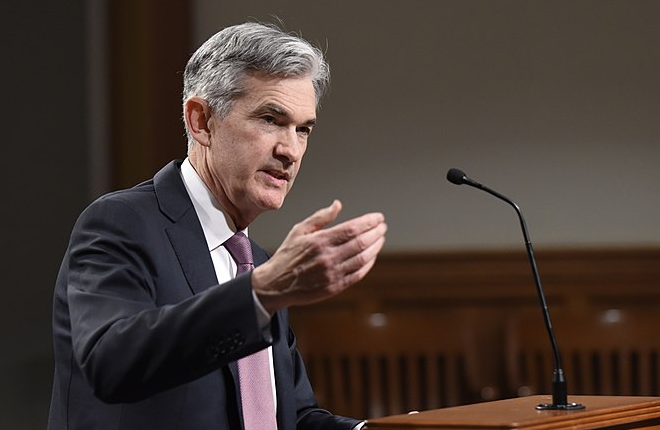In the 10 years following the global financial crisis, the liquidity injections of major central banks have inflated traditional asset classes, particularly in the fixed income markets, thus decreasing the profitability of investors. Additionally, new regulations have reduced the willingness and ability of banks to lend to smaller businesses.
In response to those trends, Katch Investment Group, -a dynamic asset management boutique offering innovative tailor-made investment solutions-, focuses on short-term lending and financing opportunities within the private debt universe. In a constantly changing and challenging financial market environment, Katch Investment specializes in areas where capital supply is scarce that offer relatively high and stable returns for investors.
Who is Katch Investment Group?
The group combines in- depth financial market knowhow, asset management experience and strong analytical skills, with a deep understanding of the needs and tastes of private investors, particularly in Latin America. The group focuses on global opportunities, without any restriction, providing greater diversification and allowing greater potential to offer high returns.
The group is owned and managed by Laurent Jeanmart, Chairman, Stephane Prigent, Chief Executive Officer, and Pascal Rohner, Chief Investment Officer. All three hold the Chartered Financial Analyst accreditation, considered one of the most respected credentials within the financial industry.
As the chairman of the group, Laurent is responsible for the sourcing of new ideas, new business initiatives, due diligence of asset managers and the creation of strategic partnerships across the globe. Laurent is based in London, one of the most important financial centers in the world. He has more than 20 years of investment experience in alternative asset management. Laurent’s previous experiences include responsibilities at Fidelis Insurance Holdings Ltd., a London and Bermuda based insurance company where he was Group Chief Investment Officer managing $1.5 billion of assets. Previously, he was Global Head of Investment at Platinum Capital Management Ltd., a global asset management platform, where his responsibilities included overseeing the firm’s actively managed funds (hedge funds, equities, volatility, and commodities).
Stephane is the CEO of the group and therefore responsible for all day-to-day operations and the distribution. He has more than 20 years of experience in asset management in several locations around the world: Paris, Boston, NYC, London, and Panama City. He has worked in several banks, such as BNP Paribas, Lehman Brothers, State Street Capital, and Credit Andorra. His focus has been on the construction and management of portfolios for clients with a focus on alternative investments. In his previous experience at State Street London, Stephane was a Managing Director in his Global Head of Equity Sales Research position. He was a member of the European executive committee and oversaw 25 people located in New York City, London, and Hong Kong.
Finally, as the Chief Investment Officer, Pascal is responsible for the investment strategy, portfolio management, marketing and investment advisory for financial intermediaries. Pascal has more than 16 years of experience in financial market research, portfolio management, and investment advisory. He worked several years as a financial analyst, strategist and investment advisor for Credit Suisse in Zurich, New York and Panama. Before joining Katch Investment Group, he was the Chief Investment Officer of Credit Andorra and its Multi Family Office, Private Investment Management in Panama.
Pascal highlighted: “I have been working with private clients and advisors in Latina America for the last 7 years. Latin Americans tend to have a very conservative investment approach for their family savings, with a focus on wealth preservation and liquidity. However, they tend to take too much risk within their fixed income portfolios, because safe bonds don’t pay enough to cover inflation and the bankers’ commissions. And maybe they do not have enough time to analyze alternative solutions”.
“Speaking to institutional and private clients in the region, we noticed that there is a huge, unmet demand for relatively safe fixed income alternatives. That’s why we started to explore the whole investment universe to find conservative investment opportunities that can provide liquidity, income and stable returns, that are not correlated to traditional asset classes,” he added.
The backdrop
The investment environment is challenging around the globe, not only in Latin America. Equities are reaching the final phase of the bull market that is characterized by high volatility on the back of trade war and recession fears. And the safer fixed income areas, such as US Treasuries offer protection but little value after the recent drop in yields. Therefore, many investors and advisors have started to focus more on alternative asset classes, an area that has long been little explored by private investors, especially in Latin America.
The problem is that many alternative assets are structurally unattractive. Commercial Real Estate is challenged by a strong trend towards online shopping and the rise of the “sharing” economy with big disruptions coming from innovative companies such as Amazon and Airbnb. Commodities are negatively affected by the trends towards alternative sources of energy, car sharing and China’s transformation from an export- and infrastructure-driven economy towards high-tech and domestic consumption. Finally, many hedge funds still suffer from the lack of transparency, the high complexity and image problems due to investors’ bad experiences in the past. Also, the 7% drop of the HFRI Hedge Fund Index in 2018 illustrates that many hedge funds remain highly correlated to other liquid assets, such as bonds and equities that had a very bad performance too last year.
The good news is that there is a new, emerging asset class that offers the most attractive risk/reward profile for investors, that is called Private Debt. The asset class started to flourish after the Great Financial Crisis. New regulations have reduced the banks’ desire and capability to lend to the real economy, especially to smaller businesses. Instead, banks helped to inflate the government bond market in their effort to accumulate reserves and strengthen their capital base.
The banks’ retreat from the loan market has left a gap that private institutions, such as private equity firms and other asset managers, have been eager to bridge. They have filled the lending vacuum to provide crucial financing to the real economy – and particularly to small and medium-sized enterprises, the backbone of our economies. Newly created investment vehicles have attracted substantial interest from institutional investors hungry for yield.
Following the financial crisis, the massive monetary stimulus has inflated the price of liquid assets, especially in fixed income markets, depressing yields for investors. At the same time, the lack of capital provided to smaller companies has kept yields for smaller loans at elevated levels. Typically, private loans pay interest rates between 5% and 15% without leverage, based upon a floating base rate (LIBOR) with very low market volatility (standard deviations below 2%). In addition, strong collaterals, personal guarantees, and relatively low nominal amounts favor low delinquency.
In summary, private lending funds generate attractive and stable returns for investors, with low volatility and low correlation to traditional asset classes. Katch Investment Group identified these trends and decided to launch open-ended investment vehicles that invest in short-term lending and financing opportunities.



